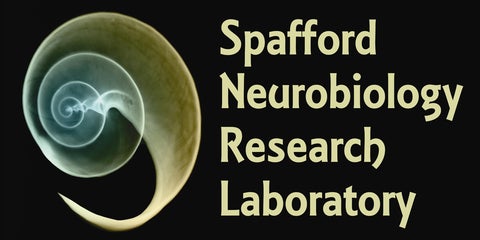
Spafford Neurobiology Research Laboratory
In the Spafford lab, we examine four domain voltage-gated cation channels:
Present central focus is in analysing the origins of electrical communication involving voltage-gated sodium, calcium and potassium channels associated with multi-cellularity in a single cell choanoflagellate model, Salpingoeca rosetta.
1. Cav3 T-type channels:

“T”-type channels are categorized amongst the calcium channels, but invertebrate ones, like in the pond snail, Lymnaea stagnalis can masquerade as sodium channels, by gene splicing of a unique veil of extracellular turret residues upstream of the selectivity filter in Domain II coded by Exon 12.
Adriano Senatore, Wendy Guan, Adrienne N. Boone and J. David Spafford, (2014) “T-type Channels Become Highly Permeable to Sodium Ions Using an Alternate Extracellular Turret Region (S5-P) Outside the Selectivity Filter" Journal of Biological Chemistry.
2. NALCN ion channel:

Channels,
Volume
2,
Issue
7
The
cover
image
illustrates
the
ambiguous
and
bipolar
nature
of
the
orphan
NALCN
ion
channel
which
has
features
of
both
sodium
and
calcium
channels
and
has
baffled
investigators.
3. Cav1 (L-type), Cav2 (nonL-type) and Cav-beta subunits:

Structural views of (R)-isradipine docked in human L-type channel Cav1.2. The dihydropyridine ligand is shown by sticks. Drug-sensing residues are space filled and hydrogen atoms are omitted for clarity. Calcium ions in the selectivity filter are shown as yellow spheres. Three amino acid residue differences in snail L-type channel pore-ling residues (N3o18Q, F3i10Y, I4i12M) out of 15 identified by Tikhonov and Zhorov (2009) model is responsible for the weak isradipine binding to snail L-type calcium channel. Taken from Figure 5 in Senatore et al. Channels, 2010.
Senatore, A., Boone, A.N., Lam, S, Dawson, T. F, Zhorov, B.S., and Spafford, J.D. (2011) “Mapping of dihydropyridine binding residues in a less sensitive invertebrate L-type calcium channel (LCav1)” Channels (5(2):173-87.
4. Other:

Online video publication of optimized ion channel transfection and patch clamp electrophysiology technique.
Senatore, A., Boone, A. and Spafford, J.D. (2011) “Optimized Transfection Strategy for Expression and Electrophysiological Recording of Recombinant Voltage-Gated Ion Channels in HEK-293T Cells” Journal of Visualized Experiments (JoVE).
Funding Support:
Heart and Stroke Foundation of Canada
NSERC Discovery Operating Grant